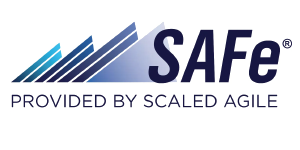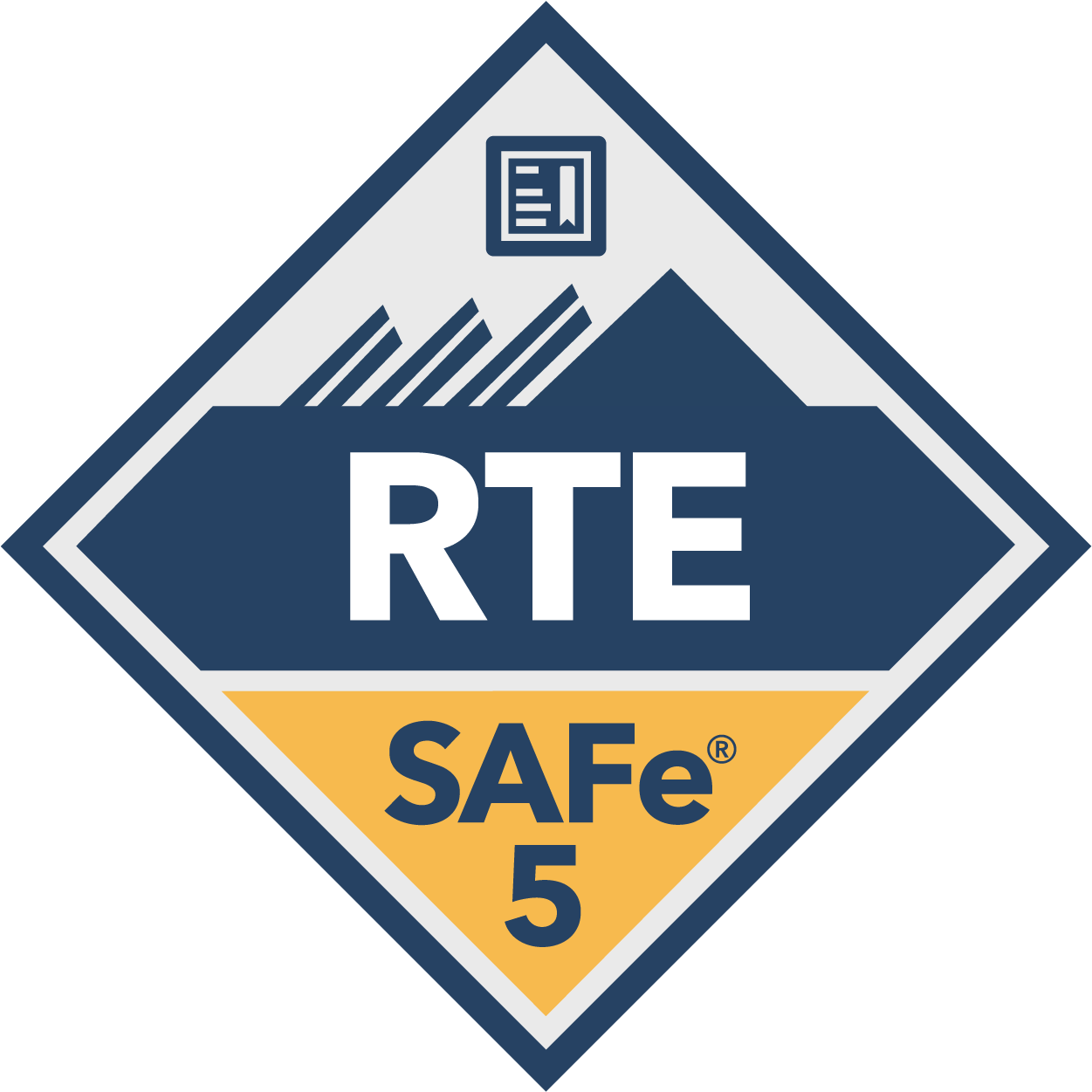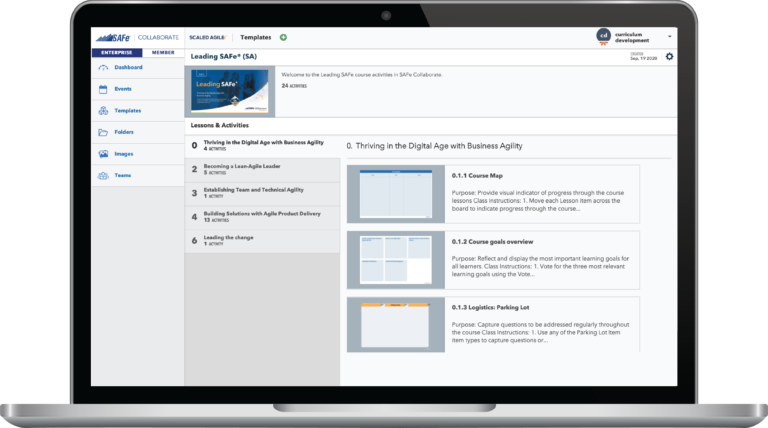Certified SAFe® Release Train Engineer (RTE)


What will you receive:
- Course materials
- Remote learning via SAFe® Virtual Classrooms
- Access to SAFe® Collaborate, a visual online workspace
- One-year membership to the SAFe® Community Platform
- Access to content, tools, and resources you need to practice Scaled Agile Framework every day
- SAFe Release Train Engineer certification exam
- Agile Thinkers Academy Slack community
- Agile Thinkers Academy Certificate of Attendance
Attendees will receive the Certification Credential:
Becoming a Certified SAFe® Release Train Engineer requires an exceptional range of skills and is a career path for many servant leaders. Certification includes:
- Certified SAFe® Agilist PDF certificate
- Certified SAFe® Agilist digital badge to promote your accomplishment online
- One-year membership to the SAFe Community Platform, which includes access to the SA Community of Practice
- Access to Meetup groups and events that connect you with other SAFe certified professionals
- A variety of learning resources to support you during your SAFe journey
PMI Professional Development Units (PDU)
Attendees may be eligible to apply for PDU towards their continuing education requirements with PMI
Description
Thriving in the digital age with Business Agility

Unique to SAFe®, the Release Train Engineer (RTE) is part of the trio of leaders that includes product managers and system architects. This plays a critical role in leading Agile Release Trains (ARTs) to deliver value. This means that the RTE must create the right environment, have the right conversations, facilitate the right meetings, and gather the right people to make decisions based on the right data.
In the SAFe® RTE course, you’ll learn to execute SAFe and continuously improve PI Planning and other key SAFe events. You’ll discover how to coach leaders, teams, and Scrum Masters in new processes and mindsets. And you’ll get the guidance and tools you need to work effectively in remote environments with distributed teams.
Leading SAFe® answers the questions:
- How do I plan for and execute a PI?
- How do I create an environment of relentless improvement?
- How do I lead and serve my ART?
Attendees learn:
- How to lead programs and large solutions in a SAFe organization.
- How to apply Lean-Agile knowledge and tools to release value.
- How to foster relentless improvement.
- How to build a high-performing ART by becoming a servant leader and coach.
Adapted for interactive remote learning with SAFe® Virtual Classrooms

Exam & Certification Details
Exam Prerequisite skills & Requirements
- The following prerequisites are highly recommended (but not required) for the RTE course:
- Have participated in at least one ART and one PI
- Hold at least one current SAFe certification
Exam Details
- Exam name – RTE - Release Train Engineer
- Exam format – Multiple choice - either one answer or multiple. Multiple response questions require all correct answers to be selected as no partial credit is given.
- Exam delivery – Web-based (single-browser), closed book, no outside assistance, timed
- Exam access – Candidates can access the exam within the SAFe Community Platform upon completion of the SAFe® Release Train Engineer course
- Exam duration – Once the exam begins, candidates have 120 minutes (2 hours) to complete the exam
- Number of questions: 60
- Passing score – SA4 = 34 out of 45 (75%); SA5 = 35 out of 45 (77%)
- Language – English
- Exam cost – First attempt included in the course registration fee if taken within 30 days of course completion.
- Retake policy – Each retake or attempt past the 30-day window is $50.
Exam study materials
The exam is designed to measure knowledge and skill related to the job role. We highly recommend candidates use a variety of resources to prepare for this exam including:
Course materials – The course materials are an essential artifact from the course and can be downloaded from the SAFe Community Platform. These materials can be used to refer back to the content that was presented during the class.
Study guide – This comprehensive guide details the job role and all resources related to the exam, including a detailed reading list. Access is available through the Learning Plan in the SAFe Community Platform upon course completion.
Practice test – The practice test is designed to be predictive of success on the certification exam,* and it has the same number of questions, level of difficulty, and time duration. It is part of the Learning Plan in the SAFe Community Platform and can be taken an unlimited number of times at no cost. *This is not the actual exam, and passing it does not guarantee success on the certification exam.
Sample Questions – A web-enabled, flashcard style version of the sample questions can be found online and in the study guide.

Training Remotely | Guidelines for a Successful Experience
Congratulations on joining Agile Thinkers remote courses. We are committed to facilitating a pleasant and enriching experience for all our attendees.
That's is why it is critically important that we are clarifying how we're going to work together to be most effective. So, let's develop some working agreements and suggestions to encourage the type of team environment that we want to foster during our training sessions.
Before the training starts:
1. Inform your co-workers/colleagues what will be the time you're attending training, and you shouldn't' be interrupted;
2. Look for a comfortable and quiet place to set your training spot;
3. Reduce distractions, noises and background interference;
4. Test your internet signal and guarantee you have a good connection;
5. Please please take some time to explore the tools and how to login;
6. Visit the toilet 10m before the session starts;
7. Stay hydrated;
8. Bring a notebook and a pen with you;
9. Limit interruptions from family members;
10. Make sure you turn off Outlook, gmail, Slack, WhatsApp, Skype or other sources of interruption;
11. If you can, select flight mode on your phone;
12. Test your earphones.
During Training:
1. While there are no questions, confirm you are mute;
2. Ask for help if you have any questions unmuting yourself or sending a message in chat;
3. Use Chat area to address the trainer some questions. As soon as possible, we will give feedback.
4. Respect the Time-boxes;
5. Be on time so you can deliver on time;
6. Don't accept calls while you're on training unless is extremely necessary and vital for you;
7. Please keep your camera on;
8. It's completely forbidden for students to record audio or video of any kind or take pictures from the sessions without written agreement;
9. For training. and quality assurance purpose of our staff, we can record video, audio and the chat of all sessions;
10. Have fun! Enjoy your course!
Make sure you also check our FAQs
All trademarks mentioned are the property of their respective owners.